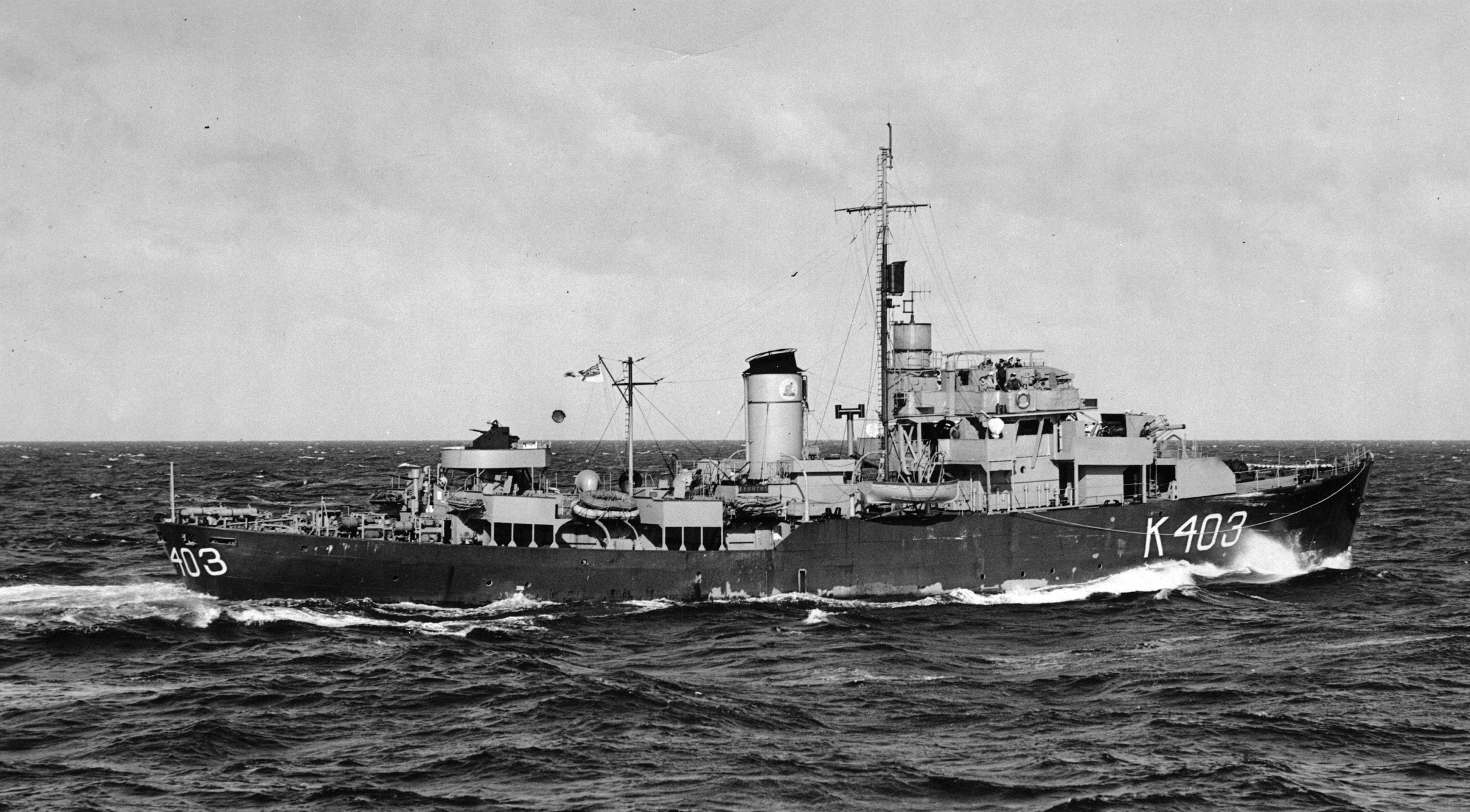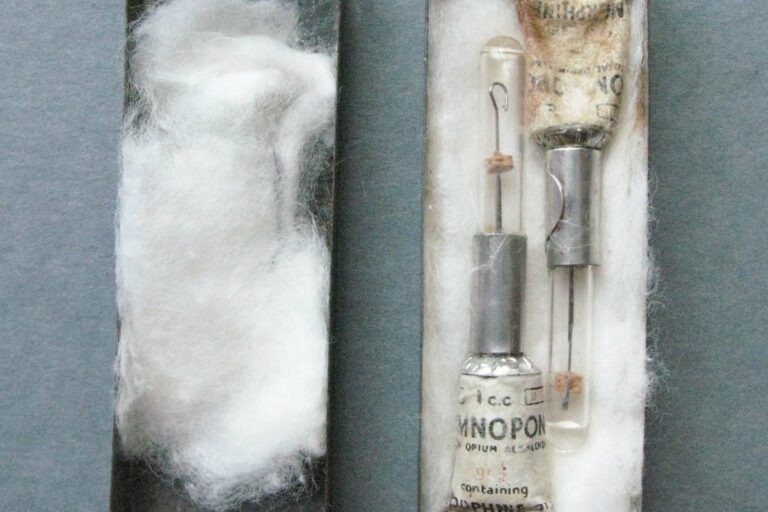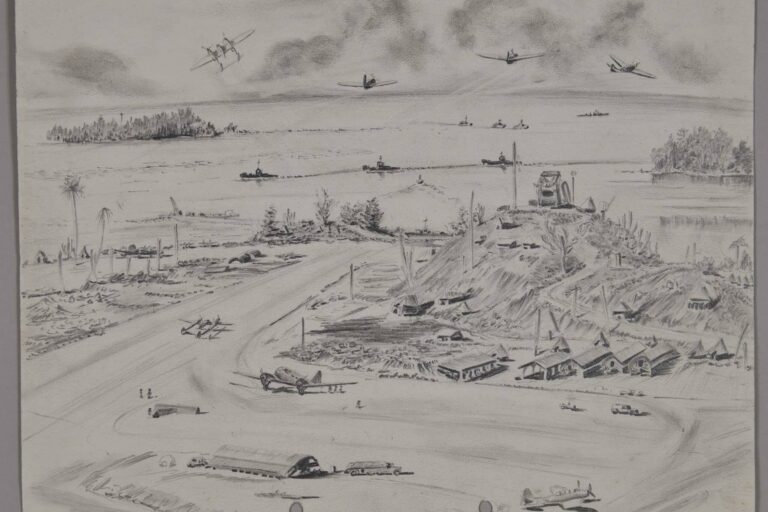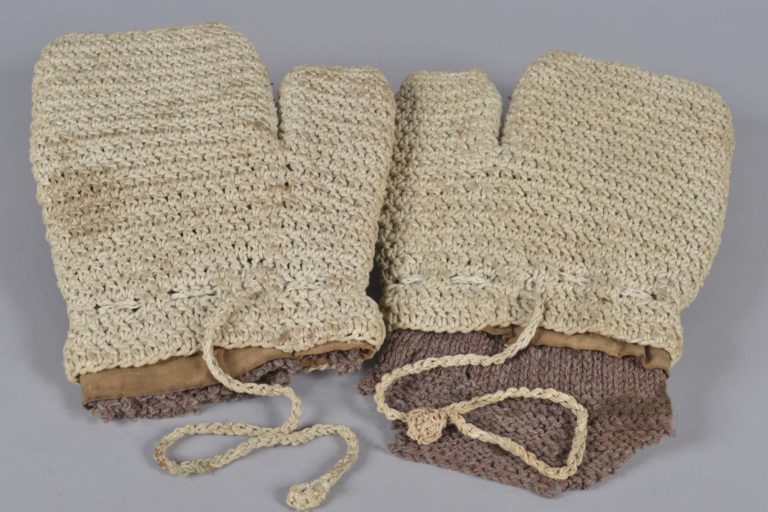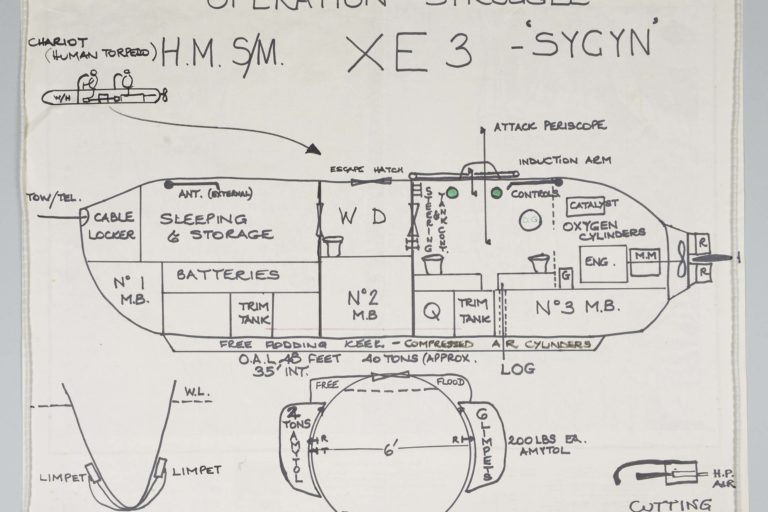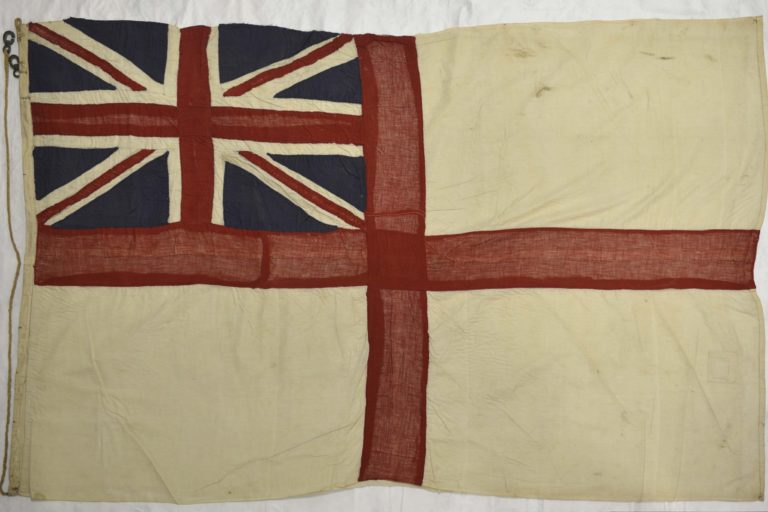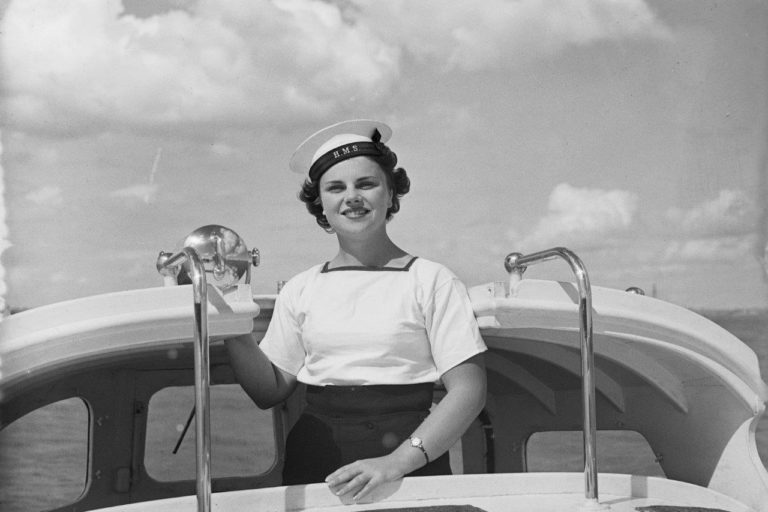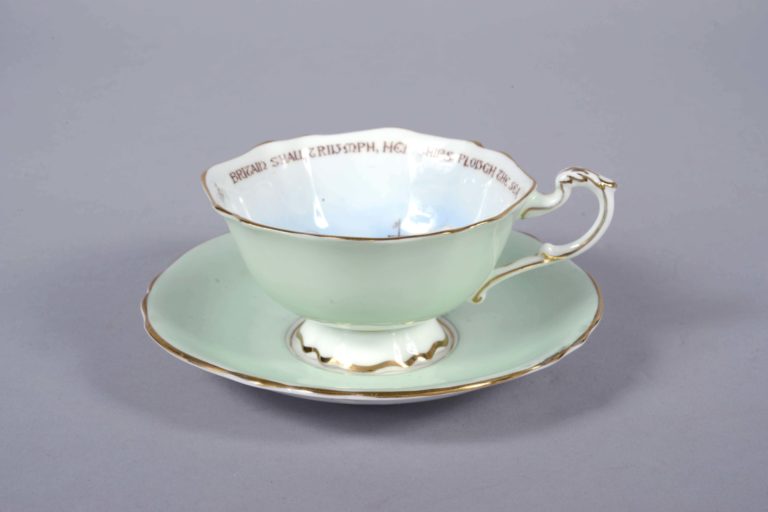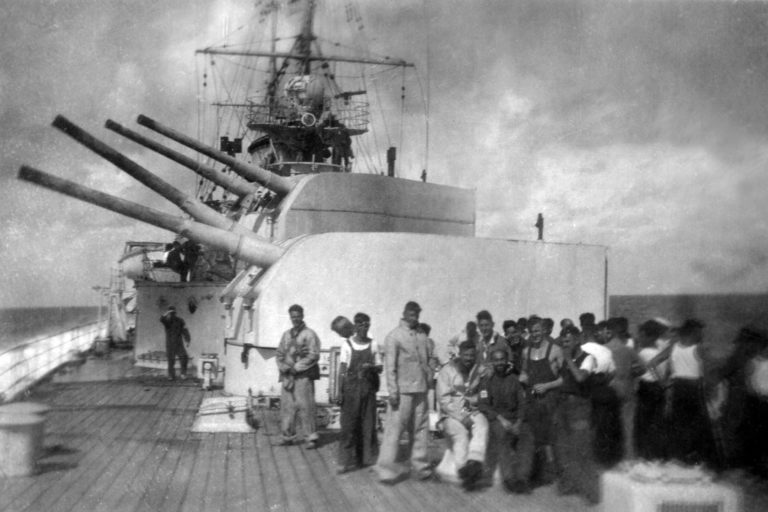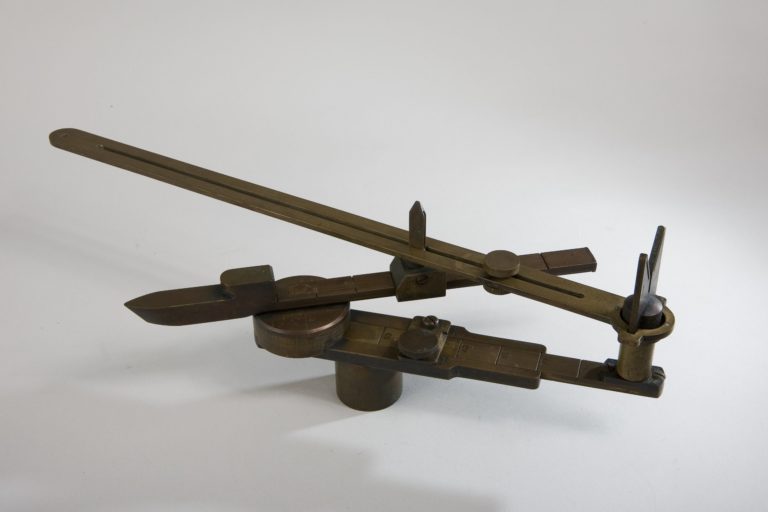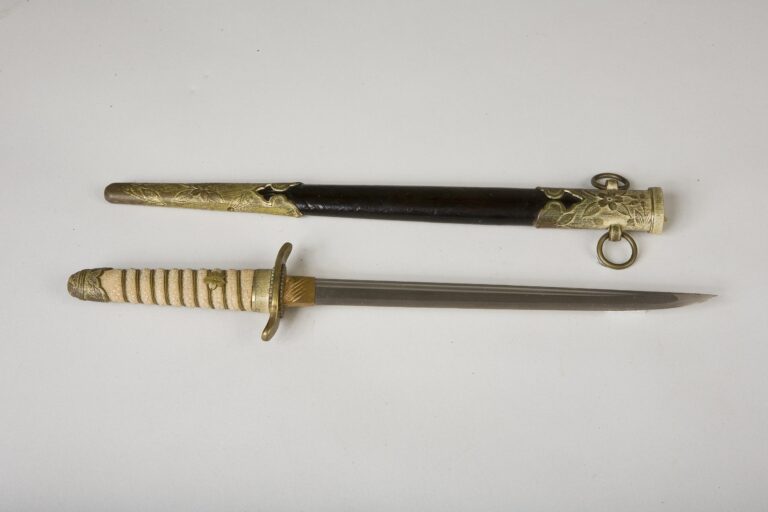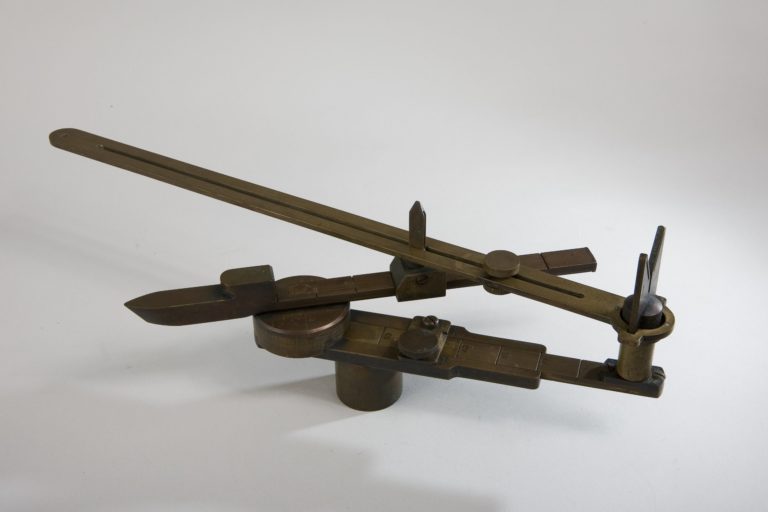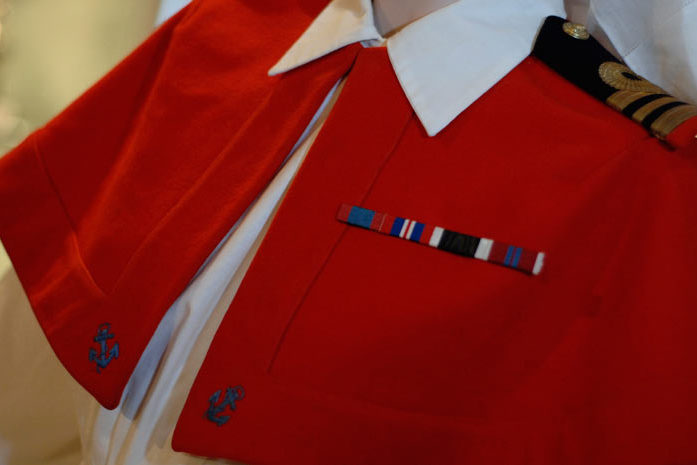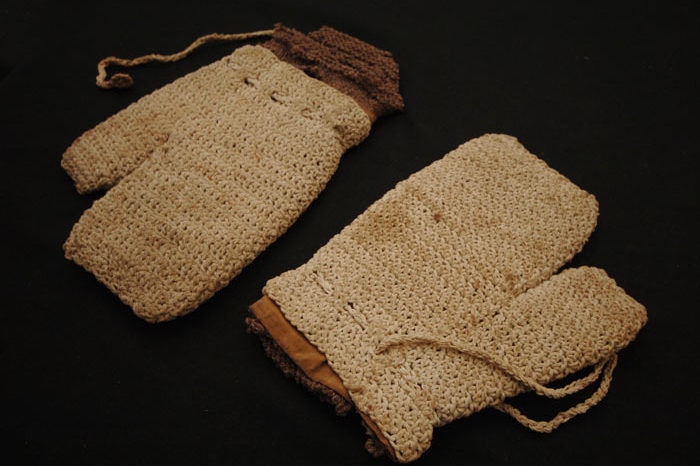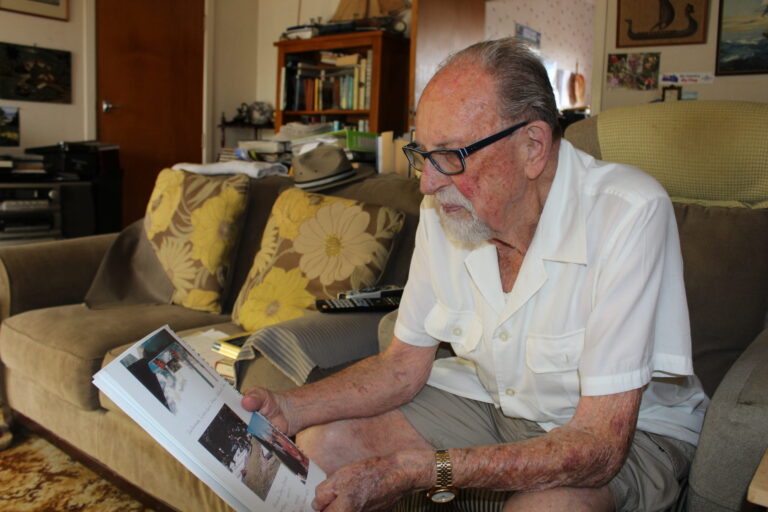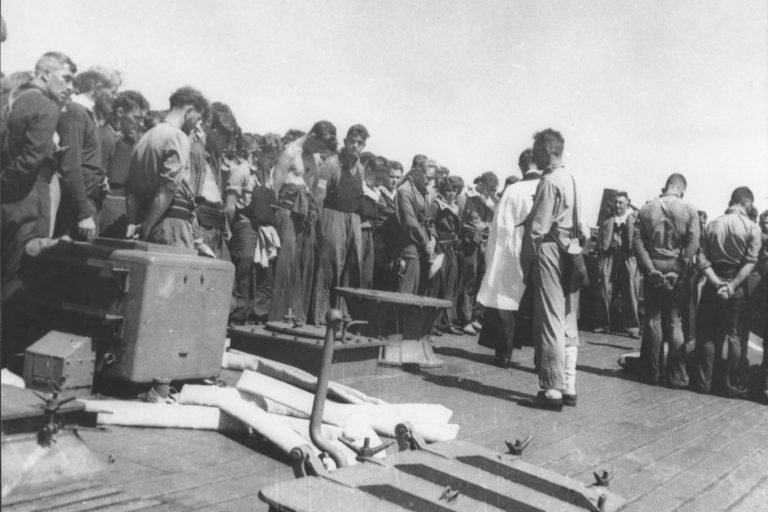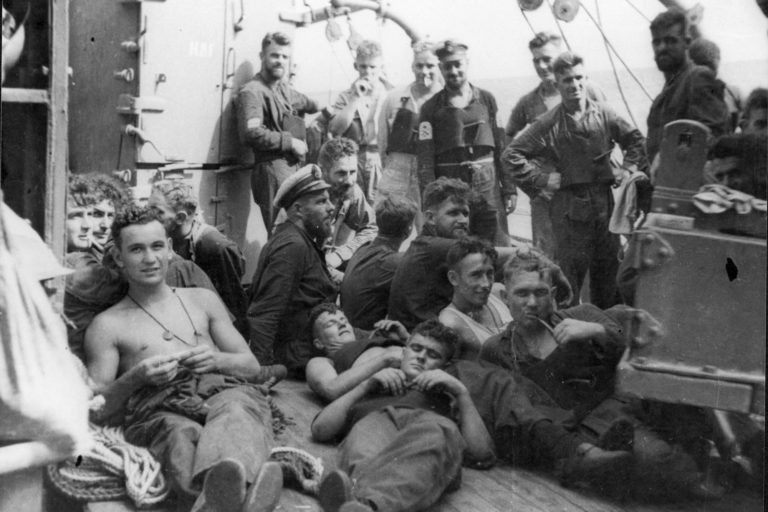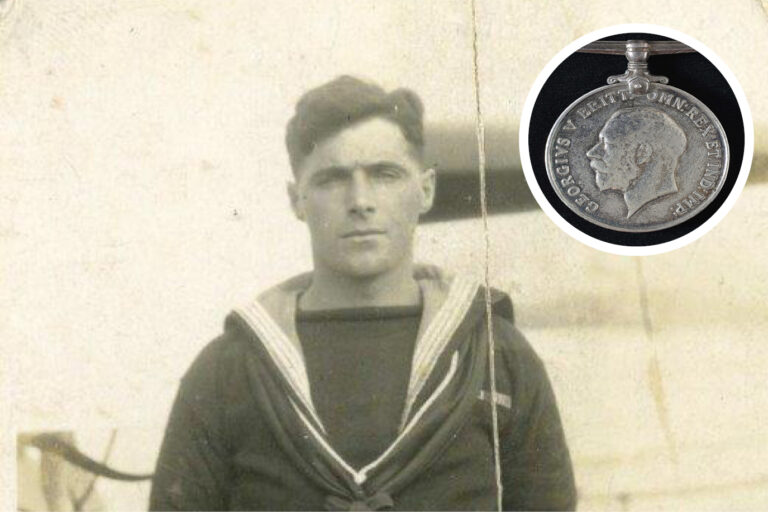Ship Details:
Type: Modified Flower-class corvette
Dimensions: 63.5 x 58.8 x 10.1 x 5.3m
Machinery: 1-shaft reciprocating 4-cylinder Triple expansion oil-fired, ihp 2280 = 16knots
Armament:
1 x 4” (102mm) gun single mount with gunshield
8 x 20mm guns 1 x 2-gun mount, 6 x single mounts
Hedgehog Anti-submarine mortar
72 x depth charges
ASDIC
Radar
Complement: 85 officers and ratings (as built), 102 in 1945 as repair ship
Colour Scheme: Hull Admiralty PB10 dark blue, Superstructure Admiralty B6
Battle Honours: Atlantic 1940-1942
Ship’s Badge:
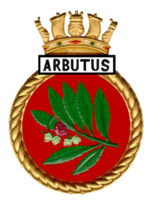 An official badge was not issued to the corvette at the time Arbutus was commissioned into service with the Royal Navy. There may have been an unofficial badge in use based on the design used for HMNZS Tamaki. The badge above was not produced until late 1947 when the Naval Board approved the design from the HMNZ Dockyard at Philomel.
An official badge was not issued to the corvette at the time Arbutus was commissioned into service with the Royal Navy. There may have been an unofficial badge in use based on the design used for HMNZS Tamaki. The badge above was not produced until late 1947 when the Naval Board approved the design from the HMNZ Dockyard at Philomel.
History:
This class of anti-submarine warship was developed in 1942 from the original Flower-class corvette design. A number of these ships were built in Britain and Canada between 1942 and 1944. The original design had been based on a whale chaser built in 1936. They were very seaworthy vessels and had incorporated developments that improved their usefulness as anti-submarine patrol and escort ships in both coastal and ocean waters.
Arbutus was laid down in May 1943 and launched at the George Brown & Co shipyards at Greenock, Scotland on 26 January 1944. The ship was commissioned into RNZN service on 16 June 1944 and was completed by 5 July 1944.
In 1943, New Zealand was seeking more escort ships for the RNZN. In June, the British War Cabinet offered Arbutus and fellow anti-submarine ship Arabis as a gift to the RNZN, and they were gratefully accepted. At the time navy was under pressure from shipping companies to release converted minesweepers back into civilian use. The government committed to the refit costs for the two vessels which had already been refitted for use in the tropics. Lieutenant Commander J.A. Rhind RNZNVR, a pre-war volunteer reservist who had served with the Royal Navy from 1941 was appointed as commanding officer.
Five New Zealanders were appointed to serve alongside the CO and most of the ratings were also New Zealanders. As the ship neared completion New Zealand sailors arrived to form the ship’s companies. Arbutus was formally commissioned into on 16 June 1944, beginning post-completion trials shortly after. Arbutus completed the work-up period by 23 July 1944, and she sailed for New Zealand on 1 August in the company of an Atlantic convoy.
Arbutus passed through the Panama Canal, briefly stooping at the United States naval base in San Diego, and then crossed the Pacific to Fiji. On 7 October 1944 the ship ran aground on a reef off Viwa Island, the most western island of the Fiji group. Arbutus was doing 15 knots at the time she struck the reef. This caused major damage to the ship including the loss of a rudder blade, bent tail shaft, broken propeller blades, and over 8 metres of hull damage. She was rescued by two United States Navy vessels and taken under tow to Suva. Leaving Suva on 20th October, the minesweeper HMNZS Aroha took Arbutus under tow to Auckland. As the ships neared Auckland, they were met by the Auckland tug William C Daldy who took on the two and Arbutus finally arrived in Auckland on 27 October 1944. The commanding Officer was subsequently court-martialed for the incident.
Due to demands on the Calliope drydock at HMNZS Philomel, Arbutus was taken to Lyttelton. Permanent repairs were made but not completed until April 1945. Arbutus finally returned to Auckland in early May 1945.
War Service
Arbutus wasn’t needed as part of the 25th Minesweeping Flotilla, so was offered to the British Pacific Fleet. The ship sailed for Sydney to be fitted out as a radio and radar maintenance ship. To meet the new role Arbutus’ complement of personnel increased to 102 officers and men. Following Arbutus’ refit, the ship departed Sydney under the command of Lieutenant Nigel Blair RNZNVR on 4 July 1945. Stopping at Manus Island to embark a RNZN radar officer and three technicians. Arbutus joined the Fleet Train in Japanese waters on 28th July. On the 31st Arbutus met up with HMNZS Gambia and Achilles serving in Task Force 37 as they arrived in the refueling area. Arbutus then spent the next three months undertaking repair work and performing escort duties. In one three-day period the ship went alongside 40 ships to trans-ship stores, spare parts and to service their radar systems. On 8 August she was dettached from the Fleet Train. She escorted three supply ships back to Manus Island with two other escorts arriving there on the 17th.
HMNZS Arbutus had spent 33 continuous days at sea and steamed 12,200km without stopping her main engine. The ship departed Manus Island escorting supply ships to Hong Kong. She arrived at Hong Kong on 16 September 1945 and formed part of the Allied fleet taking the Japanese surrender. Following this, HMNZS Arbutus was released from the British Pacific Fleet and returned to Auckland arriving on 1 October 1945. HMNZS Arbutus’ war was now over. Since leaving Sydney on 4 July Arbutus had steamed a total of 32,100kms in 77 days of operations. The Commander in Charge of the British Pacific Fleet sent a message to the New Zealand Naval Board saying he was most grateful for the contribution of Arbutus to the Fleet’s operations off Japan.
Post-War
In November 1945, Arbutus took a scientific party to the Three Kings Island and remained there into December 1945 and then returned to Auckland. In January 1946, she and Arabis were converted into minesweepers to clear the Hauraki Gulf minefields as part of Operation NA which had begun in March 1945. The final sweeping of the Cuvier Island area was the final task of the 25th Minesweeping Flotilla which in March 1946 consisted of Arbutus, Arabis, Kiwi and three danlayers.
From September 1946 to January 1947 Arbutus cruised the Pacific Islands to ‘show the flag’. She attended the 1947 Waitangi celebrations; the first visit of a naval vessel after the new flagpole had been erected in 1946. In April 1947 she took an urgently needed supply of avgas to Aitutaki and from May to July 1947 she visited the Cooks, Tokelau and other island groups. She cruised New Zealand from October to December 1947 and returned with Arabis to Waitangi for the 1948 celebrations.
Involvement with the 1947 Mutiny
Naval history has shown that some munities within a naval force can be violent affairs, fortunately the 1947 Royal New Zealand Navy mutiny was not. The mutiny itself only lasted three days, but the events that led up to it stretch back much further. Due to the war there were many problems within the navy at this time: pay and conditions for its sailors were well behind those of other services and civilians in equivalent jobs. These grievances were not able to be addressed until late 1945 when a welfare committee chaired by Commander Davis-Goff discussed the issues, and an understanding was reached that pay increases would be offered in early 1946. This announcement was important for many wartime sailors who were considering the navy as a post-war career. The announcement then became a campaign promise from Labour Party leader Peter Fraser who made a commitment to grant pay rises from 1st April 1946, he was duly re-elected prime Minister and the RNZN looked forward to its first pay review.
In April 1948, she left New Zealand in company with Arabis and sailed via Australia, Singapore and the Mediterranean, arriving in Portsmouth on 29 June 1946. The ship’s company used her as accommodation while they commissioned the Loch-class frigates.
HMNZS Arbutus was paid off from RNZN service in September 1948. In 1951 Arbutus was broken up.

